Tenkara USA's Daniel Galhardo and Colorado Trout Unlimited's Dan Omasta, Grassroots Coordinator recently sat down to talk about CTU's efforts in river conservation and fisheries protections across the state. Omasta discusses the recent policy victories for public lands as well as CTU's programs in youth education and community engagement. They also discussed the true lineage of the native Greenback Cutthroat Trout and why some anglers might be surprised to learn that they have been seeing a hybrid version of Colorado's state fish rather than a true greenback. This is because of recent a study by scientists at the University of Colorado at Boulder, where they found that the pure genetics of the greenback were isolated to ponds just outside of Bear Creek and Bear Creek itself. Take a listen below or read the full transcript of the episode here.
Native trout hitch a ride home on the backs of volunteers
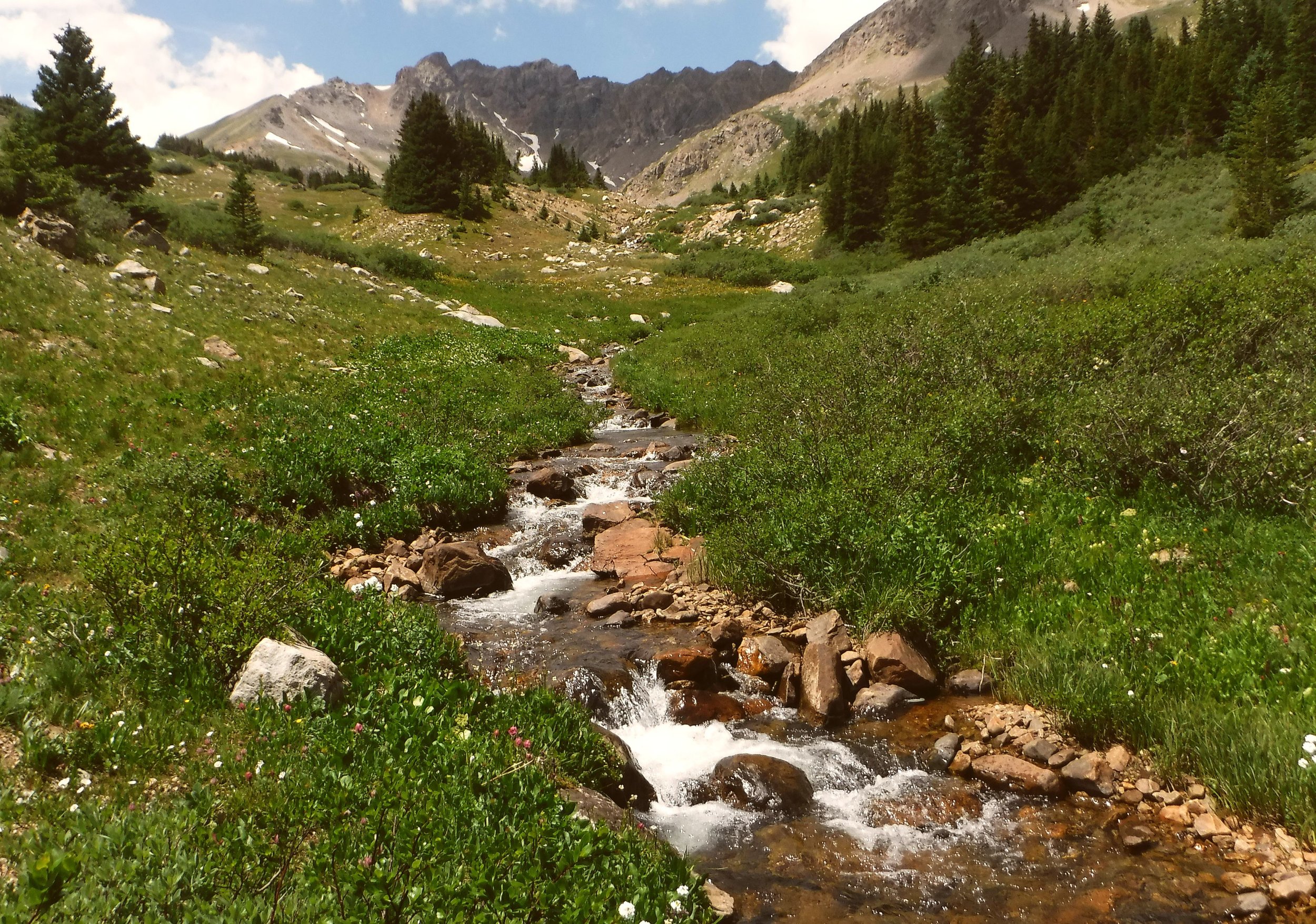
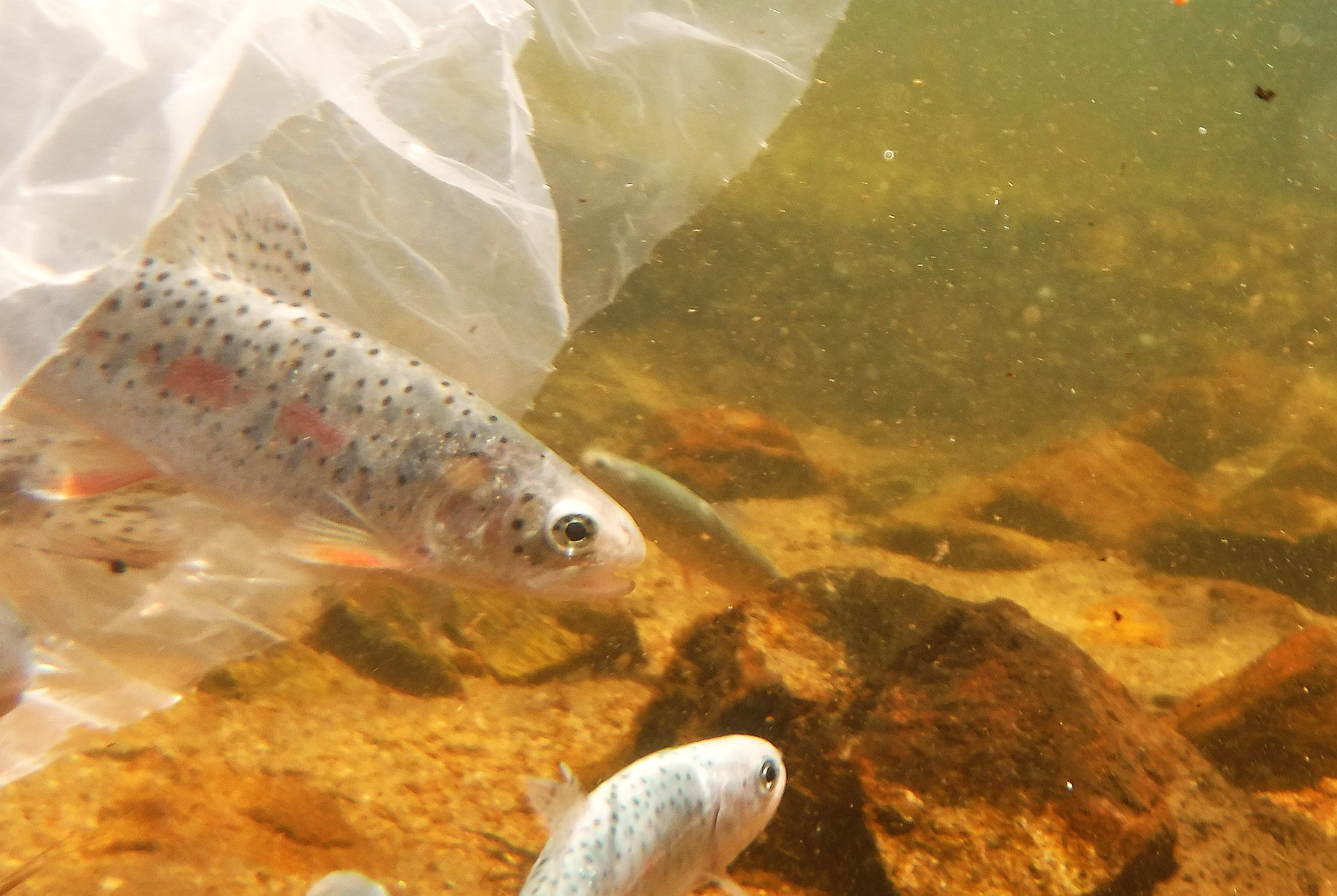
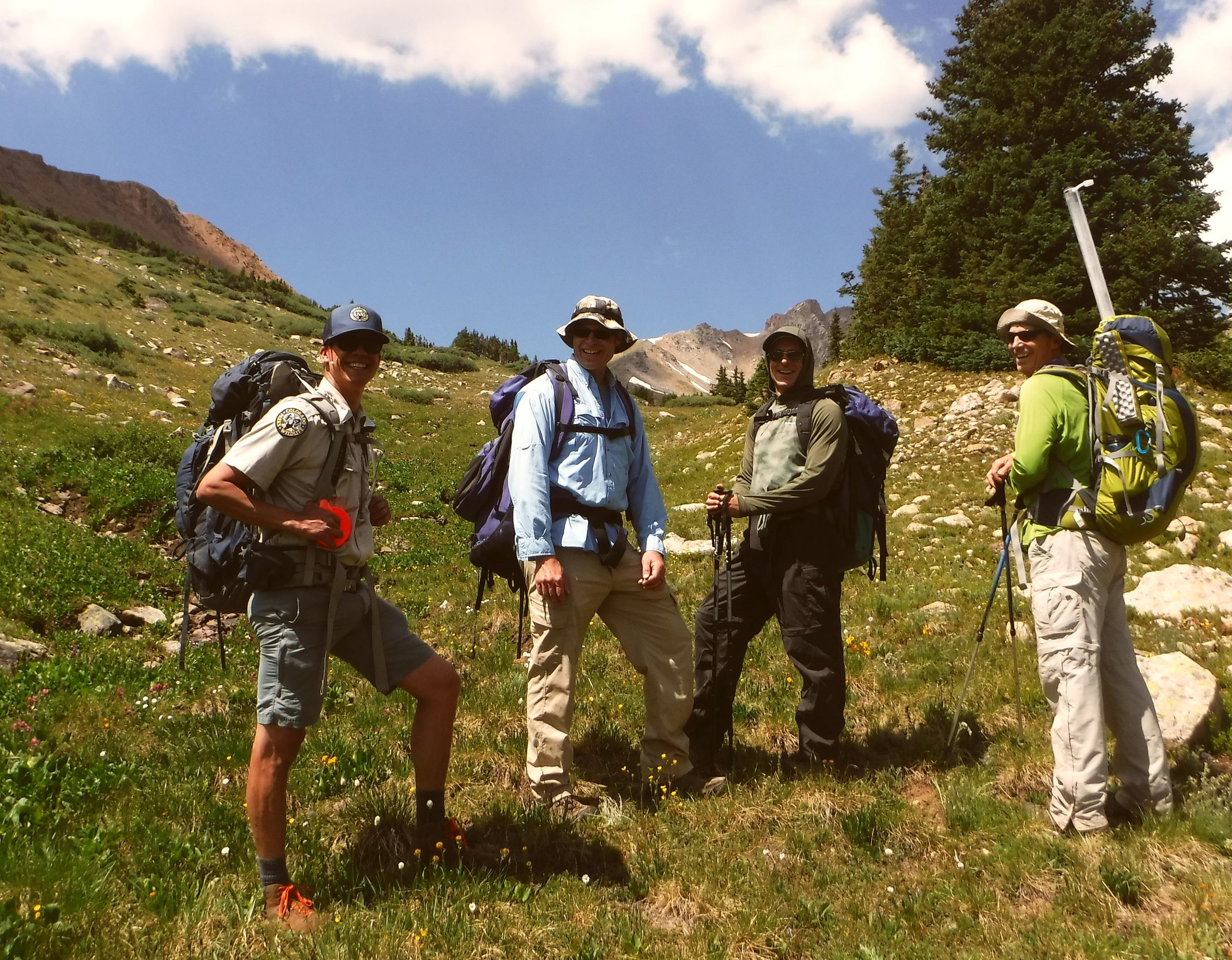



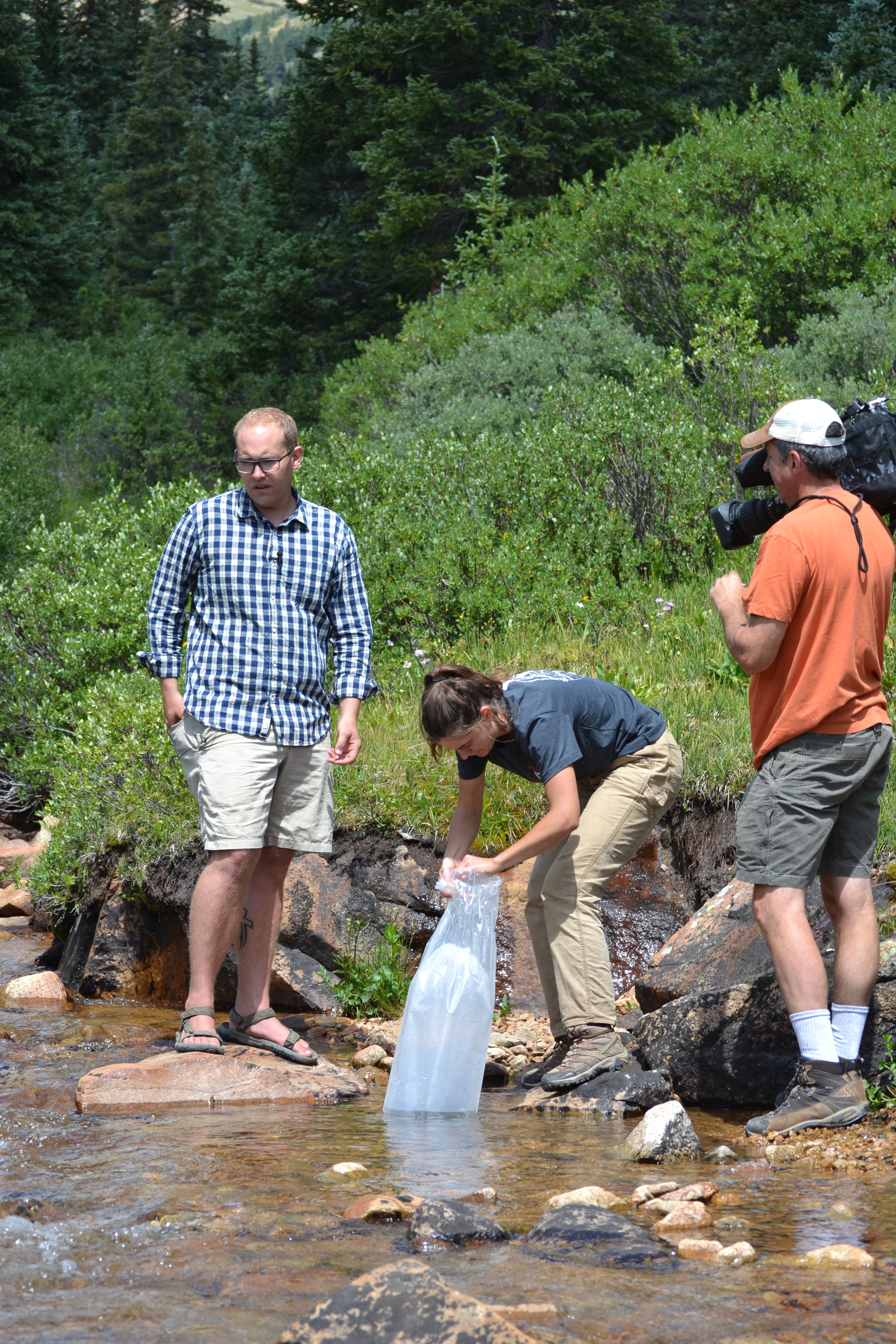



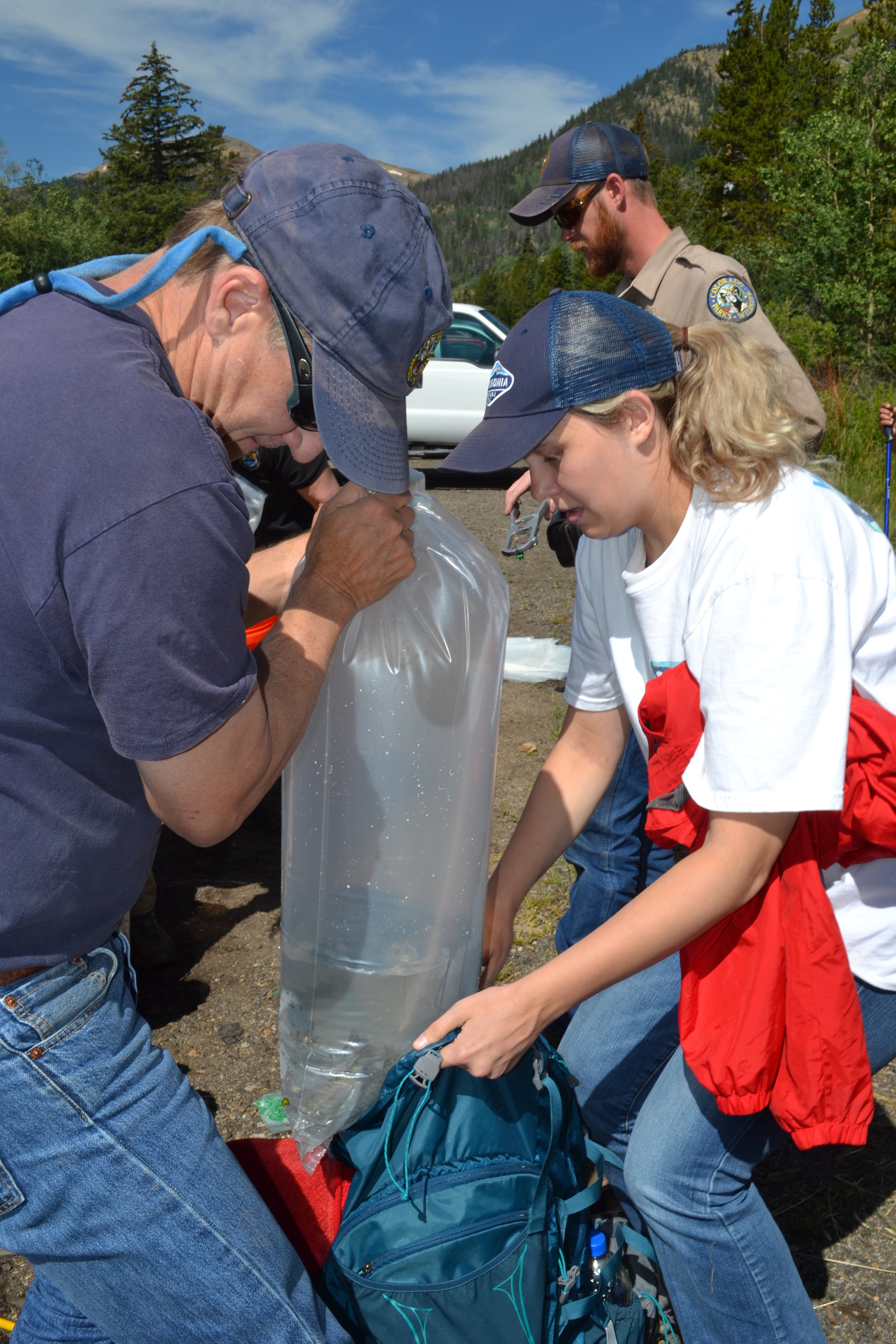
Pictured: UpslopeBrewing Co., Western Native Trout Initiative, and Colorado Trout Unlimited.
CLEAR CREEK, CO – This week, the endangered Greenback Cutthroat Trout got a major boost from Trout Unlimited volunteers and agency partners in Colorado.
Once thought to be extinct, this rare fish is making a big comeback thanks to the efforts of the Greenback Cutthroat Recovery Team – a partnership that includes the US Forest Service, Bureau of Land Management, US Fish and Wildlife, the National Park Service, Colorado Parks and Wildlife, the Western Native Trout Initiative, and Trout Unlimited.
Over the course of two days in mid-July, 1,700 Year 1 Cutthroats (~4-6 inches) made their way into two headwater drainages in the Clear Creek Watershed, an hour west of Denver, CO. The Dry Gulch and Herman Gulch creeks represent the first major river populations for this threatened species since it was rediscovered in 2012.
To help agency partners stock these important little fish, over 80 Trout Unlimited volunteers carried the cutthroats in large packs up steep switchbacks and bush-wacked through dense brush to get to the remote rivers. Some people hiked over six miles into the top of the drainage (over 11,500 feet)! These volunteers came from ten different TU chapters and represented all walks of life – anglers and conservationists coming together to recover this native trout.
“We couldn’t do it without the volunteers,” says Paul Winkle, Colorado Parks and Wildlife biologist for the Clear Creek Drainage. It was a major undertaking that took a lot of support from agency staff, non-profit partners, and local businesses.
At Colorado TU, we are very proud of the hard work and dedication that our chapters and volunteers provide to these projects. It shows what can happen when people focus on collaboration and overcoming differences. It didn’t matter whether someone was young or old, Democrat or Republican, a dry fly purist or never fished before – we were all side by side, climbing those steep trails together. All to save the Greenback.
That's right! Over 80 volunteers and 20+ agency staff from Colorado Parks and Wildlife, US Forest Service, and US Fish and Wildlife service packed up 1700 native Greenback cutthroat trout to be released along Dry Gulch and Herman Gulch on July 16 & 18. These little trout were raised in a hatchery as part of a statewide effort to restore population's of Colorado's state fish. I'm not sure if you can tell if a fish is happy, but those little guys sure looked excited to be released into their new home. Check out the video spotlight that CBS Local Channel 4 did about the effort, below:
Feeling inspired? Learn more about Native Trout across Colorado - the efforts to protect and restore populations and ways to get involved.
Volunteers gather before setting off to deliver native trout to their new home. Volunteers and staff from:
U.S. Forest Service-Arapaho & Roosevelt Natl Forests Pawnee Natl Grassland, U.S. Fish & Wildlife Service Southwest Region, Pikes Peak Chapter of Trout Unlimited #508, St. Vrain Anglers Trout Unlimited, The Greenbacks | Colorado Trout Unlimited, basin + bend, Western Native Trout Initiative, Dublin Dog Co., West Denver Trout Unlimited, Cutthroat Chapter of Trout Unlimited,Boulder Flycasters, Colorado Parks and Wildlife,Trout Unlimited, Gore Range Anglers - Trout Unlimited and Upslope Brewing Company.
A big shout out to all the volunteers who came out to hike and haul the native trout to their new homes, and to the various groups and agencies that came out to restore Colorado's native fisheries. Read the full story that CBS Channel 4 News did here.
Pictured: Western Native Trout Initiative Sticker and Dublin Dog Co. trout collar.
Thank you to the following:
Colorado Parks and Wildlife
US Forest Service
US Fish and Wildlife
Western Native Trout Initiative
Loveland Ski Co.
CBS Channel News 4
Trout Unlimited Chapters
Trout Unlimited
5 tips for fishing the drought
Water temperatures are important to monitor when fishing in the summer. Trout are a coldwater species and therefore respond negatively to warming waters. Need more information about fishing, stream flows. rigging, and locations? Check out our "Go Fish" page.
This winter was certainly a tough one for Colorado. Whether you fish small creeks in the high country, irrigate your crops on the Western Slope, or water your lawn in central Denver, we will all be feeling the impacts of the low-water year. According to the latest SNOWTEL analysis offered by the NRCS National Water and Climate Center the percentage of snow-water equivalent (SWE) in Colorado currently ranges from 5% to 44% of normal. While it is true that hydrologic conditions can differ from drainage to drainage – with some areas seeing minimal impact from the low snow totals – overall,
Colorado will see less water in the creeks and rivers this year. Anglers, irrigators, ranchers, municipalities, and recreationalists will all feel the pain this summer, but we are not the only ones. Low flows and hotter days can have serious impacts on fish. With less water and warmer temperatures, the dissolved oxygen content within a stream reach can fluctuate significantly – meaning less holding capacity for fish and bugs. These tough conditions can also affect spawning, migration, and recovery (for example, after being released off the hook).
As anglers, we wait all winter to chase trout during the warmer seasons, but how can we pursue that goal and not over-stress our fisheries? We reached out to our fly shop partners around Colorado and posed that very question:
The Tips





The fish and wildlife will continue to adapt to these changing conditions, but we can certainly do our part to help them adjust. Take this year as an opportunity to explore new watersheds, improve your handling practices, and better understand your local streams. If you have questions about when and where to fish, you can always ask your local fly shop.
CONTINUE THE CONVERSATION
CPW offers fishing in reservoirs to avoid the warming streams
San Luis Valley Chapter asks for voluntary fishing restrictions
About the Author
Dan Omasta is the Grassroots Coordinator for Colorado Trout Unlimited, overseeing 24 chapters across the state.
Hermosa 416 Fire Update: Spreading into Native Colorado River Cutthroat Trout habitat
High Quality map available for download here.
Update from National TU Staffer, Ty Churchwell, San Juan Mountains Coordinator & Sportsmen’s Conservation Project:
The 416 fire that started June 1, 2018 located 13 miles north of Durango, CO is currently over 35,000 acres large and is at 36% contained as of June 27, 2018 (seen in red outline & fill). Currently, the fire has encroached upon a large section of an isolated native cutthroat population along Clear Creek (traced with blue in the bottom left corner). You can see that most of that drainage has been hit. Clear Creek has been hit hard and currently burning more.
The middle-left creek, Big Bend, also highlighted in blue is currently an isolated population of native cutthroats that are held safe from invasives by a natural waterfall. The other blue lines at the top of the map indicated where the reintroduction program waters are. The basin continues north along with the reintroduction program, but the map cuts off about 1/4 of that. The reintroduction program and Big Bend are clear of fire right now.
It’s mostly burning back on itself with about 100 acres of additional acreage in recent days. There are two hot spots: 1) very near/at Clear Creek’s top end. 2) in the interior of Hermosa burning NW towards Big Bend.
Currently, updates are being posted on the 416 Facebook page here.
Volunteers make way for Greenback trout recovery efforts along Rock Creek
Volunteers working to dislodge a disruptive beaver dam along Rock Creek drainage in Colorado. Image courtesy of: Basin+Bend.
On June 21, 2018, volunteers and Colorado Parks and Wildlife staff met between Fairplay and Grant, CO to work on helping take down beaver dams along the Rock Creek drainage. The Rock Creek drainage is a critical piece of the Greenback recovery puzzle and will provide nearly eight miles of connected stream habitat once the project is completed. With the help of Trout Unlimited volunteers and chapters, agency partners, and private landowners, there are 4.5 miles of stream that are currently being prepared for greenback reintroduction in the next 2-3 years. The project below will help make progress on the remaining 3.4 miles of critical habitat.
Last Thursday, volunteers focused on removing beaver dams from sections of the Rock Creek drainage in order to help CPW treat the area for Whirling Disease and non-native brook trout. Volunteers hiked up about a mile and used various tools to help dislodge the dams that were blocking creek flows. A huge thank you to all the volunteers for all their hard work, which resulted in the second scheduled day of work not being needed! Nice job, everyone! If you are interested in future projects, we have upcoming ones listed here.
To learn more about Native trout and restoration projects across Colorado check out our page here. Check out the great pictures taken by Erik Myhre of Basin+Bend in Evergreen, CO.

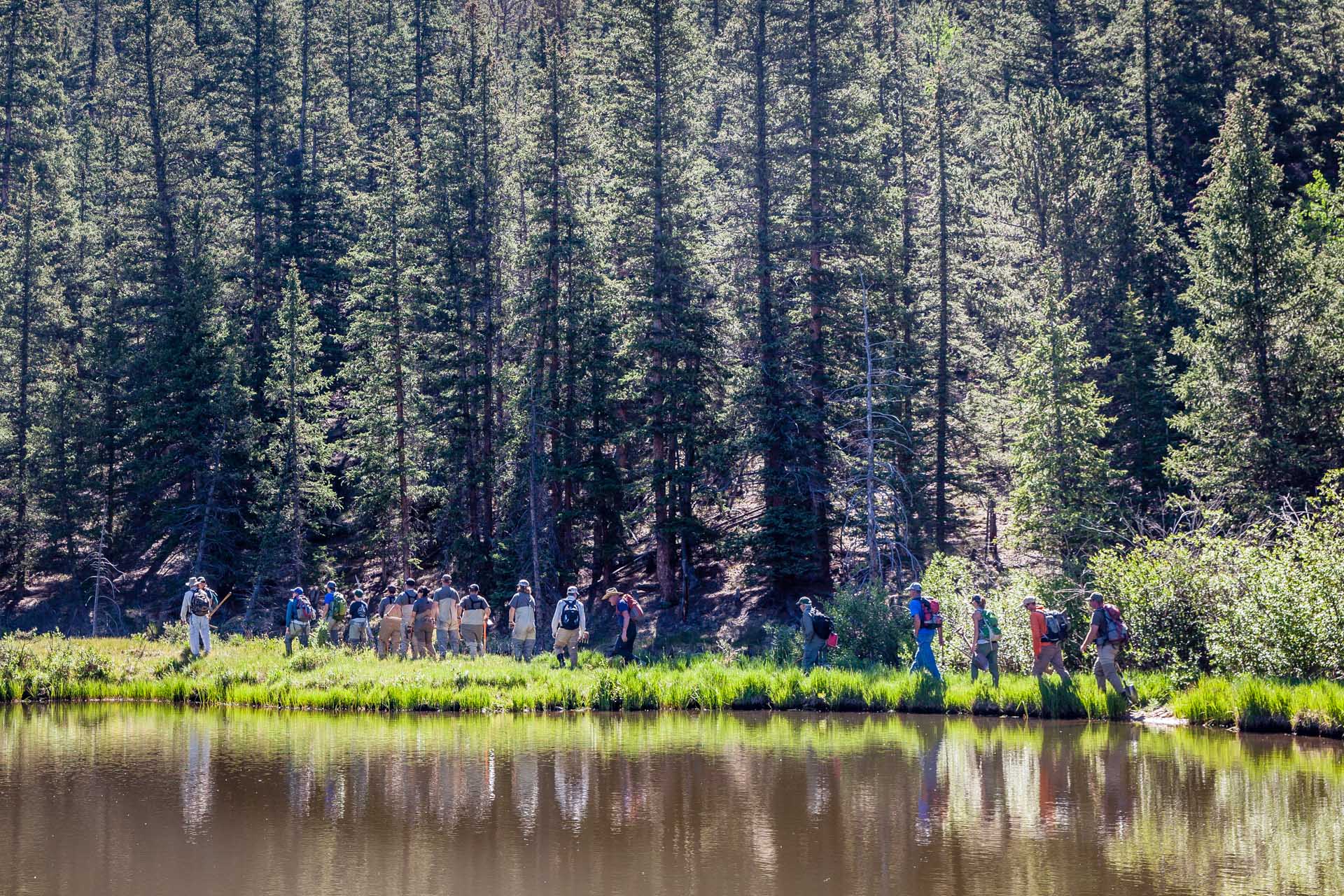
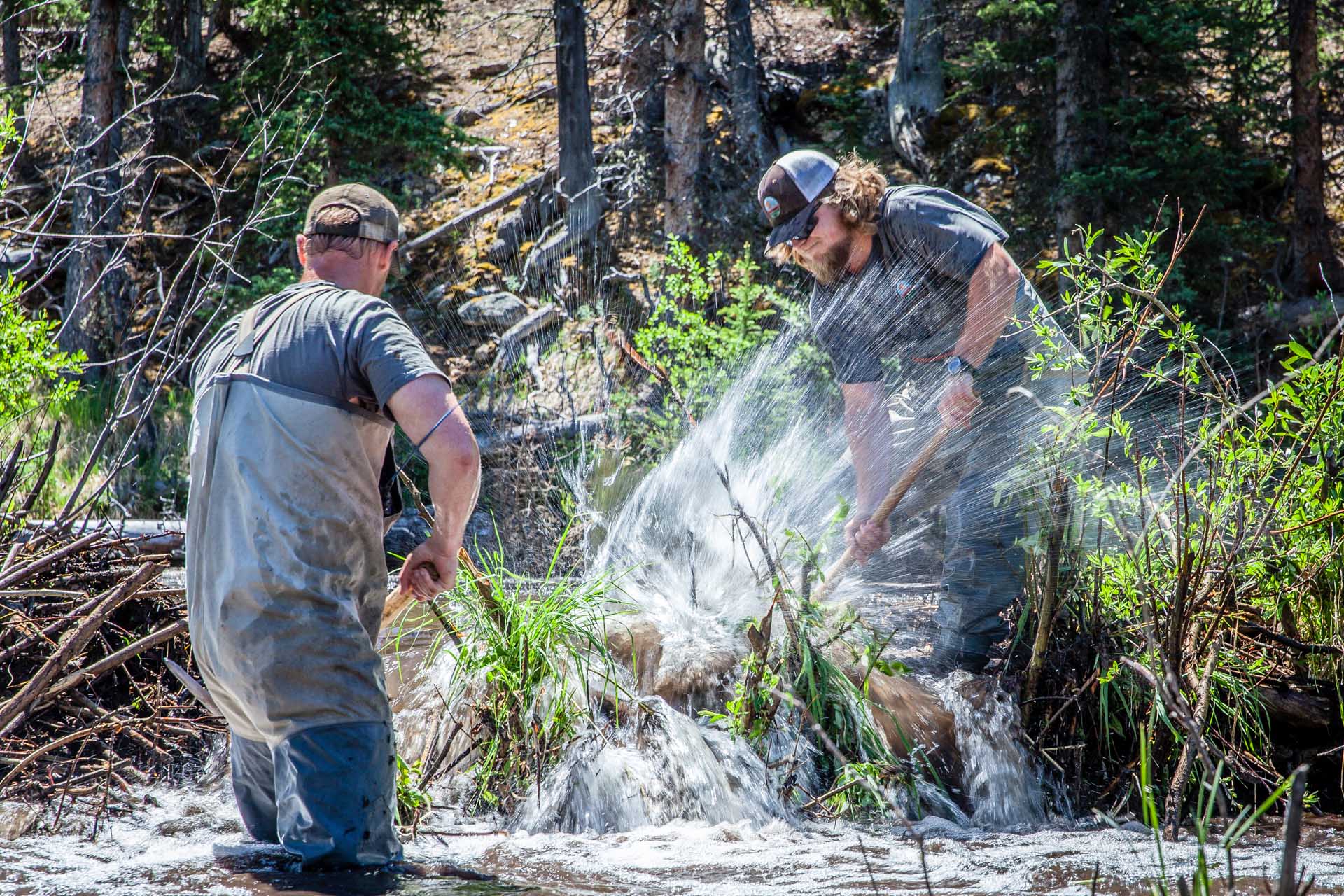
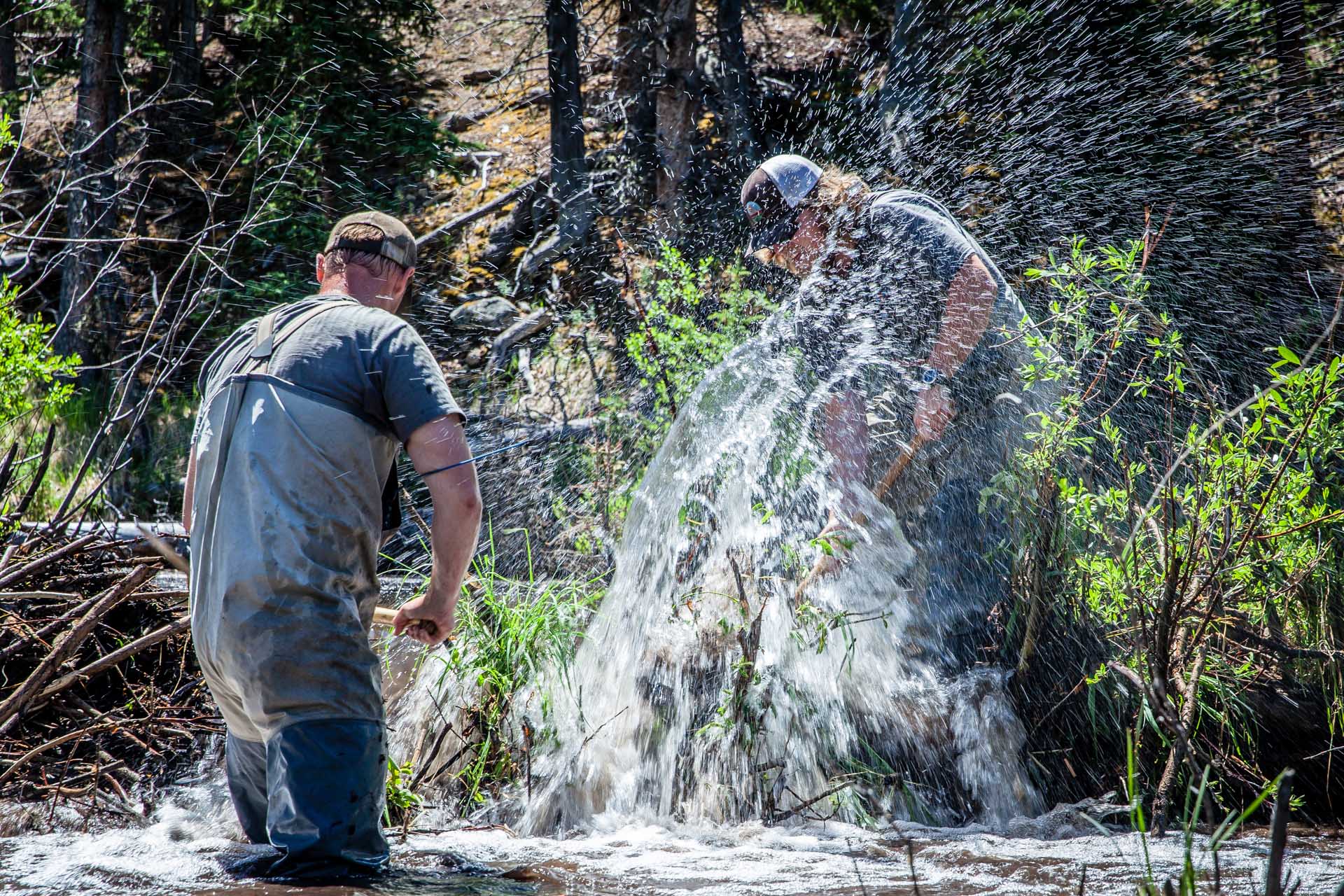
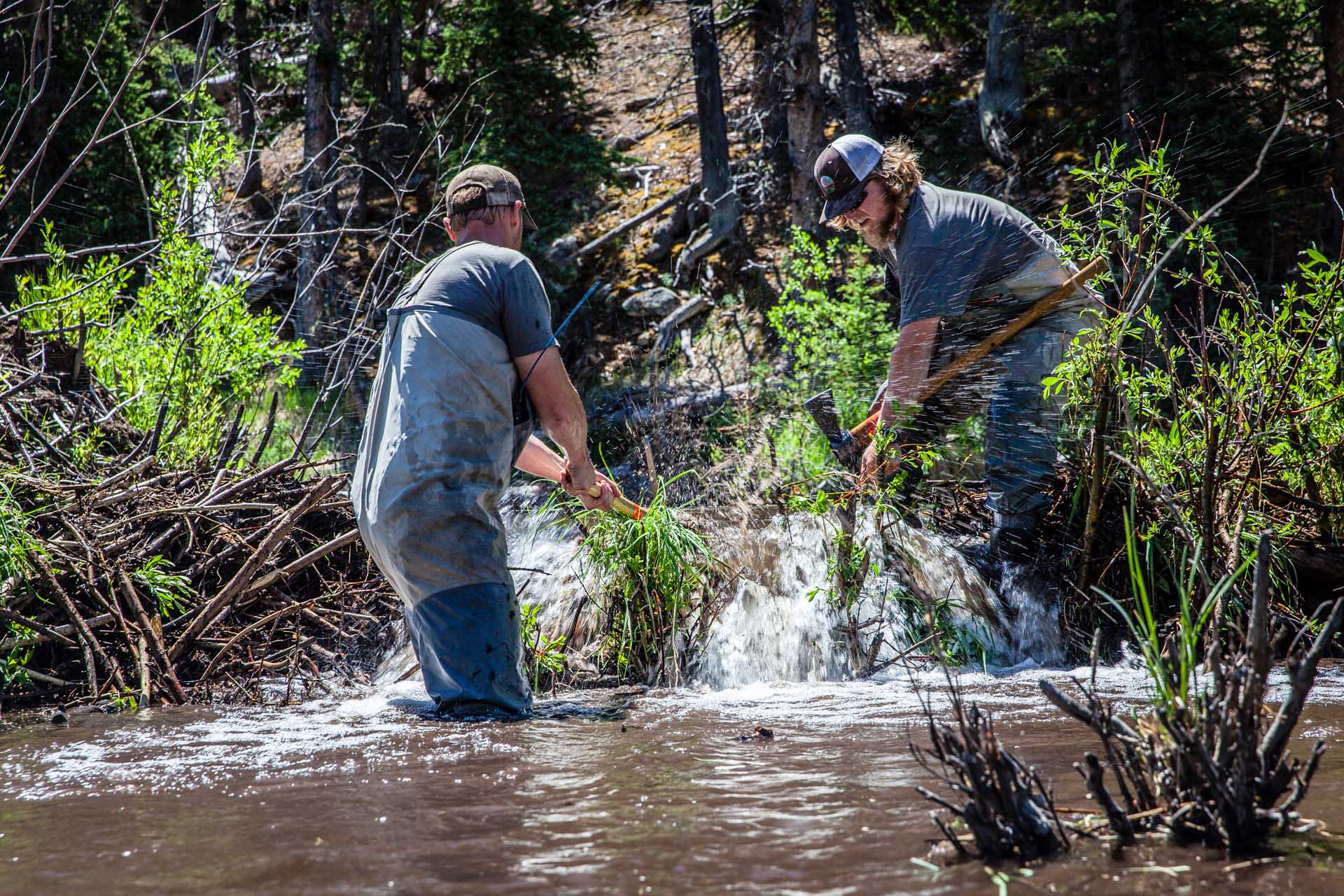
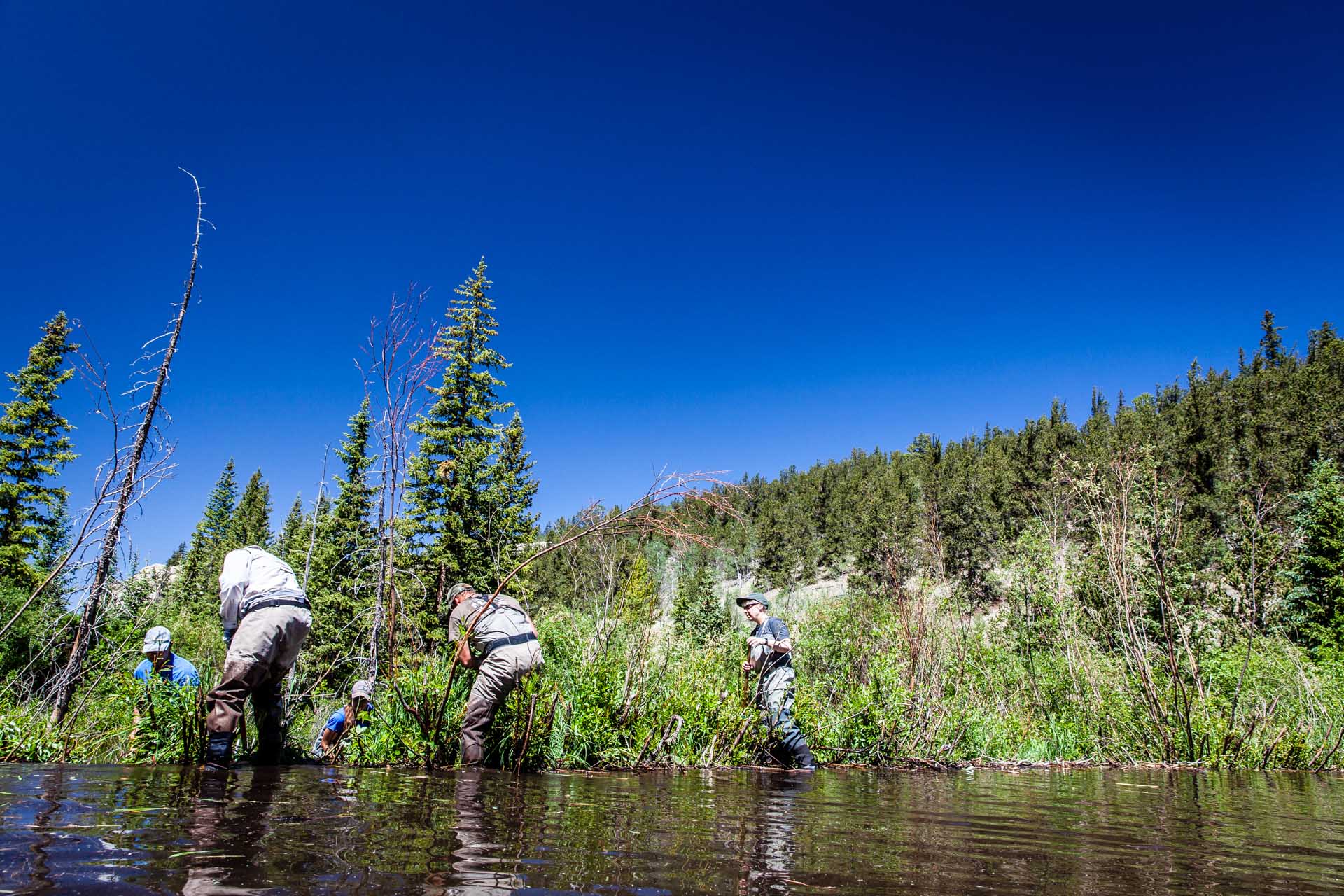

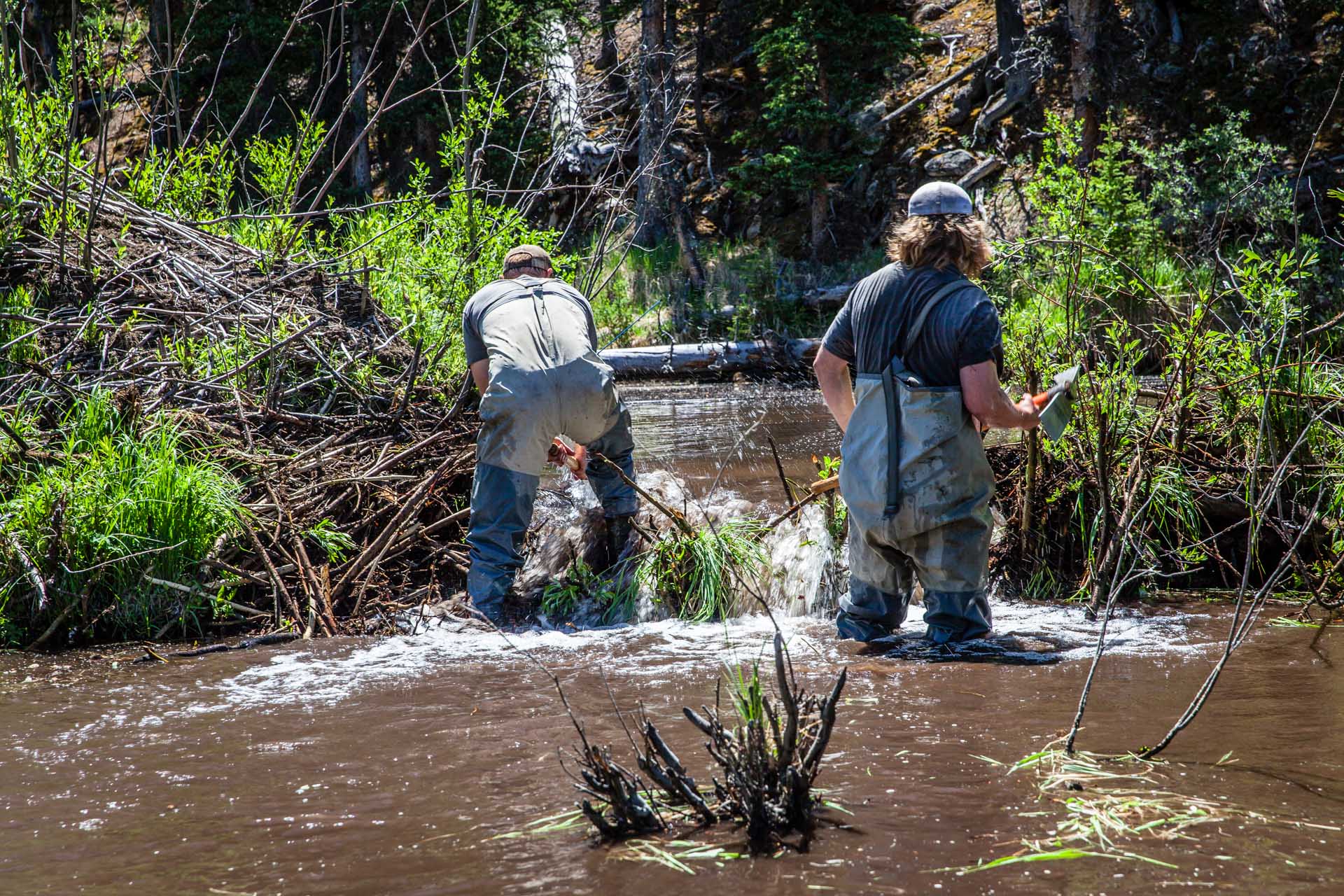
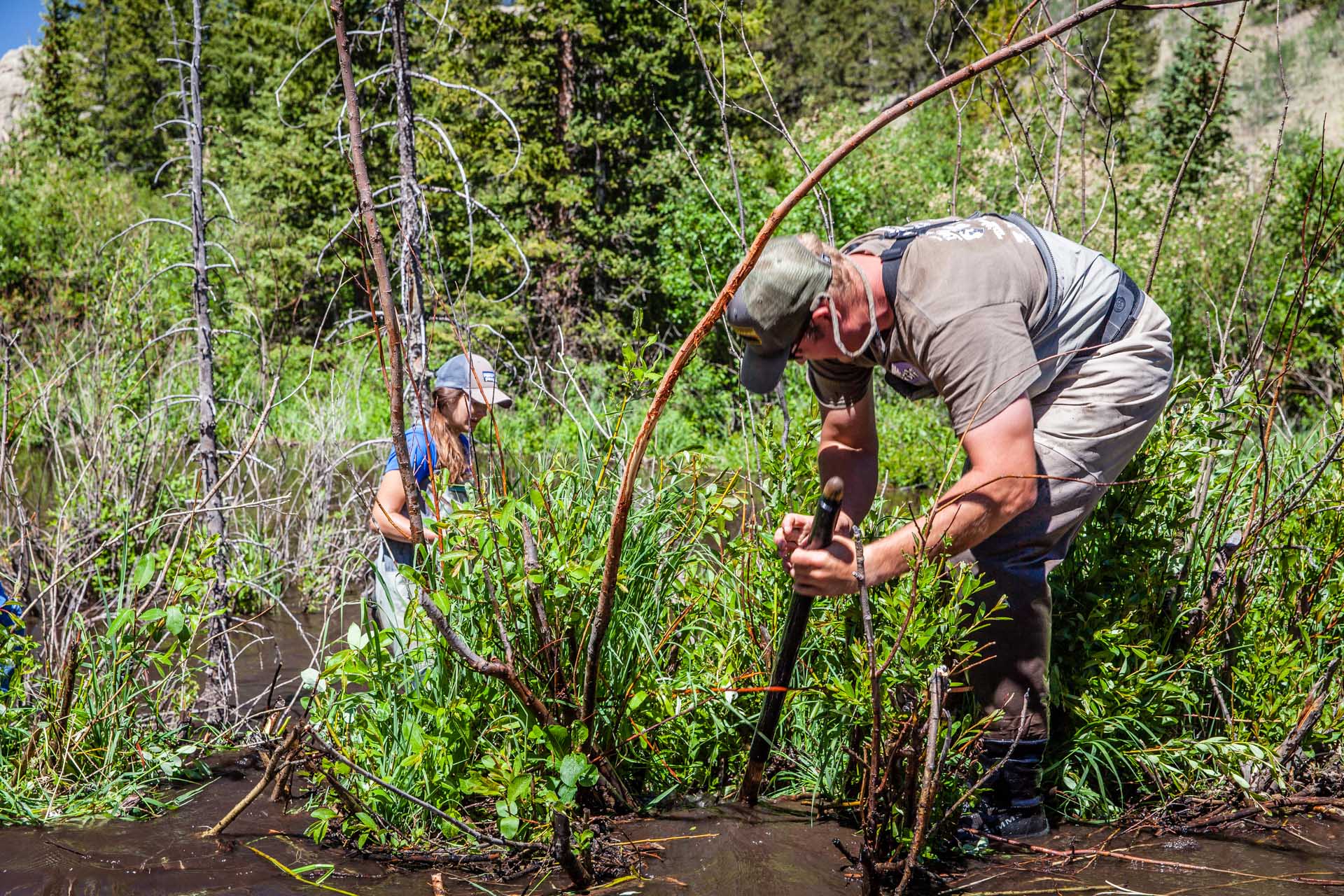
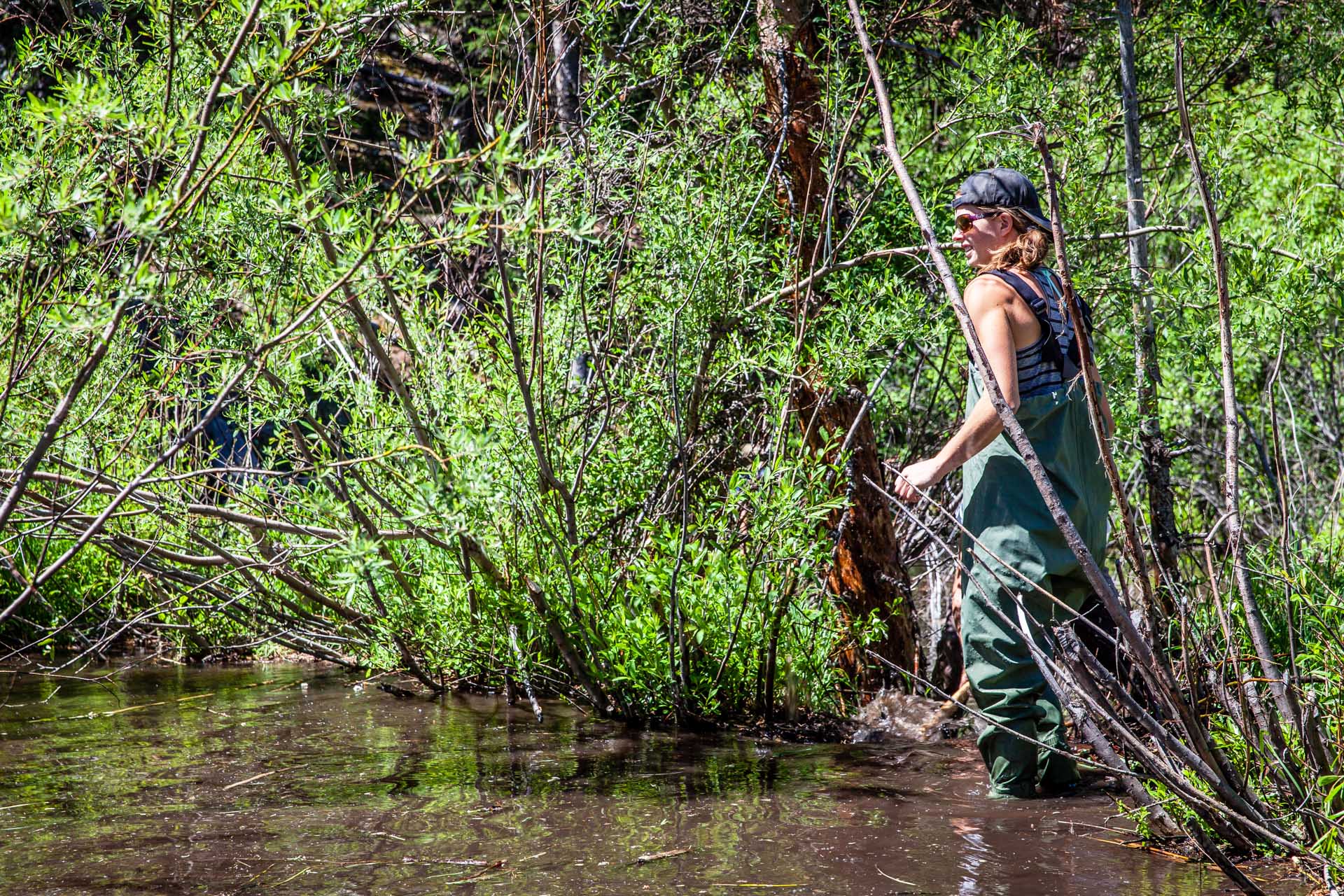
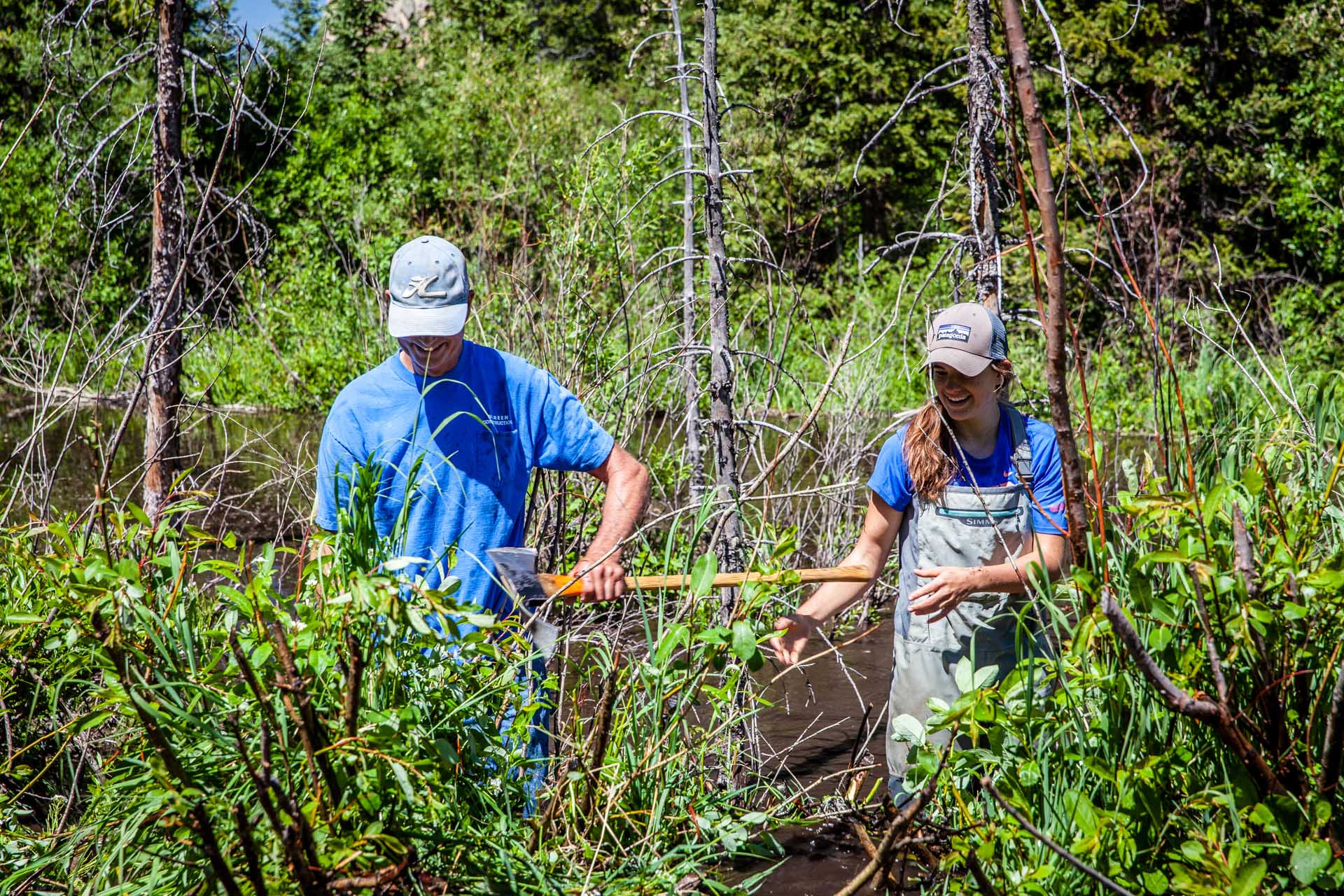
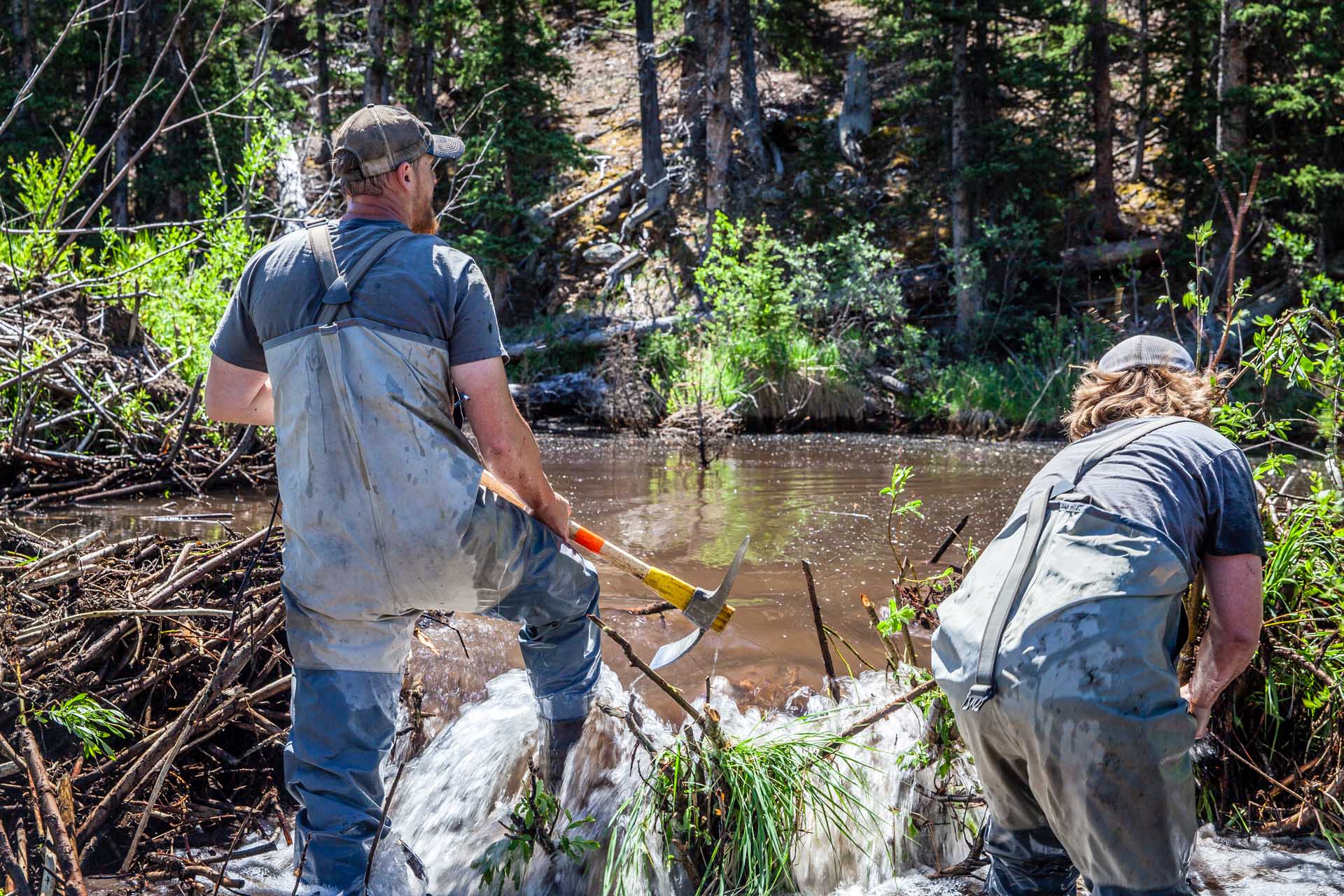

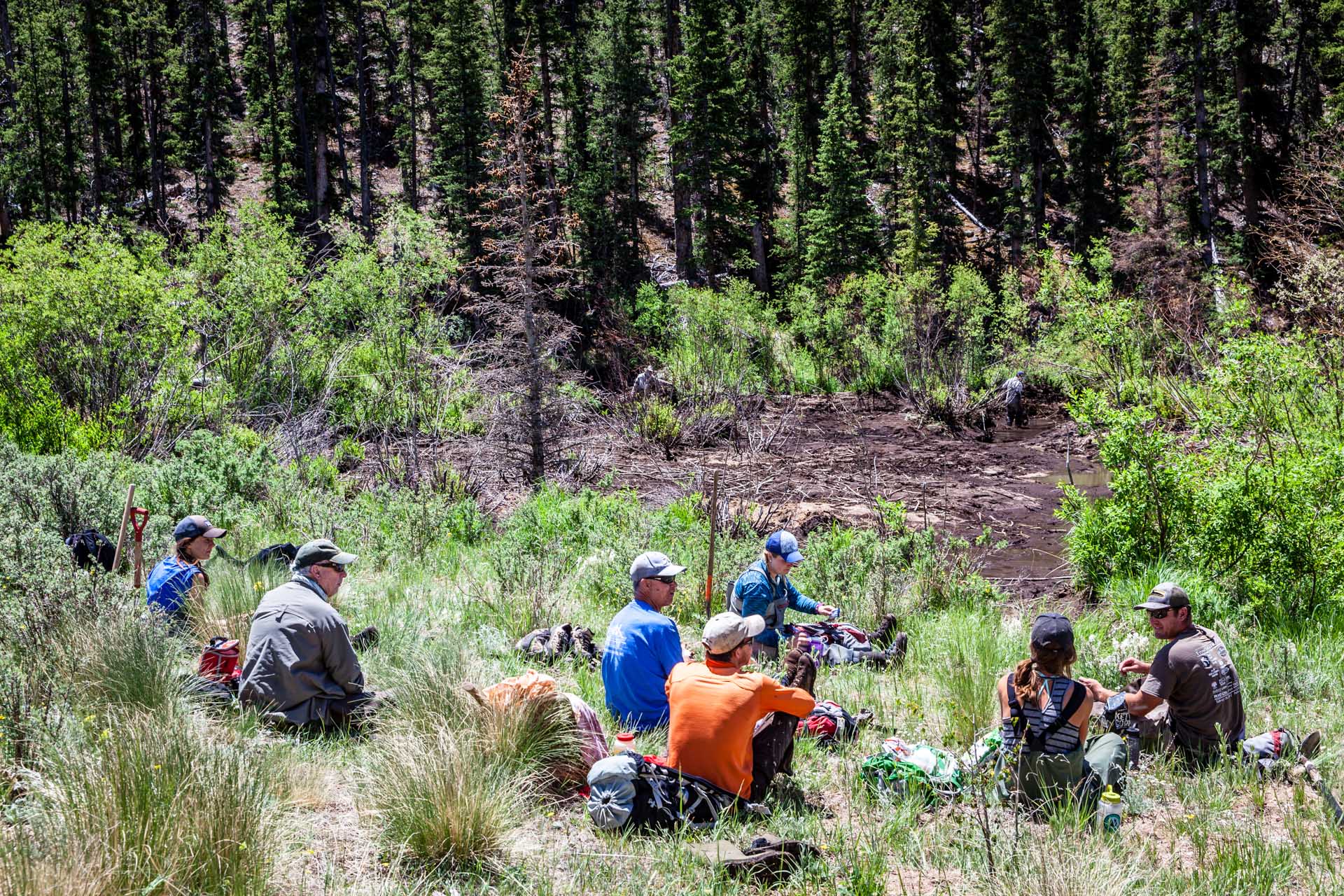
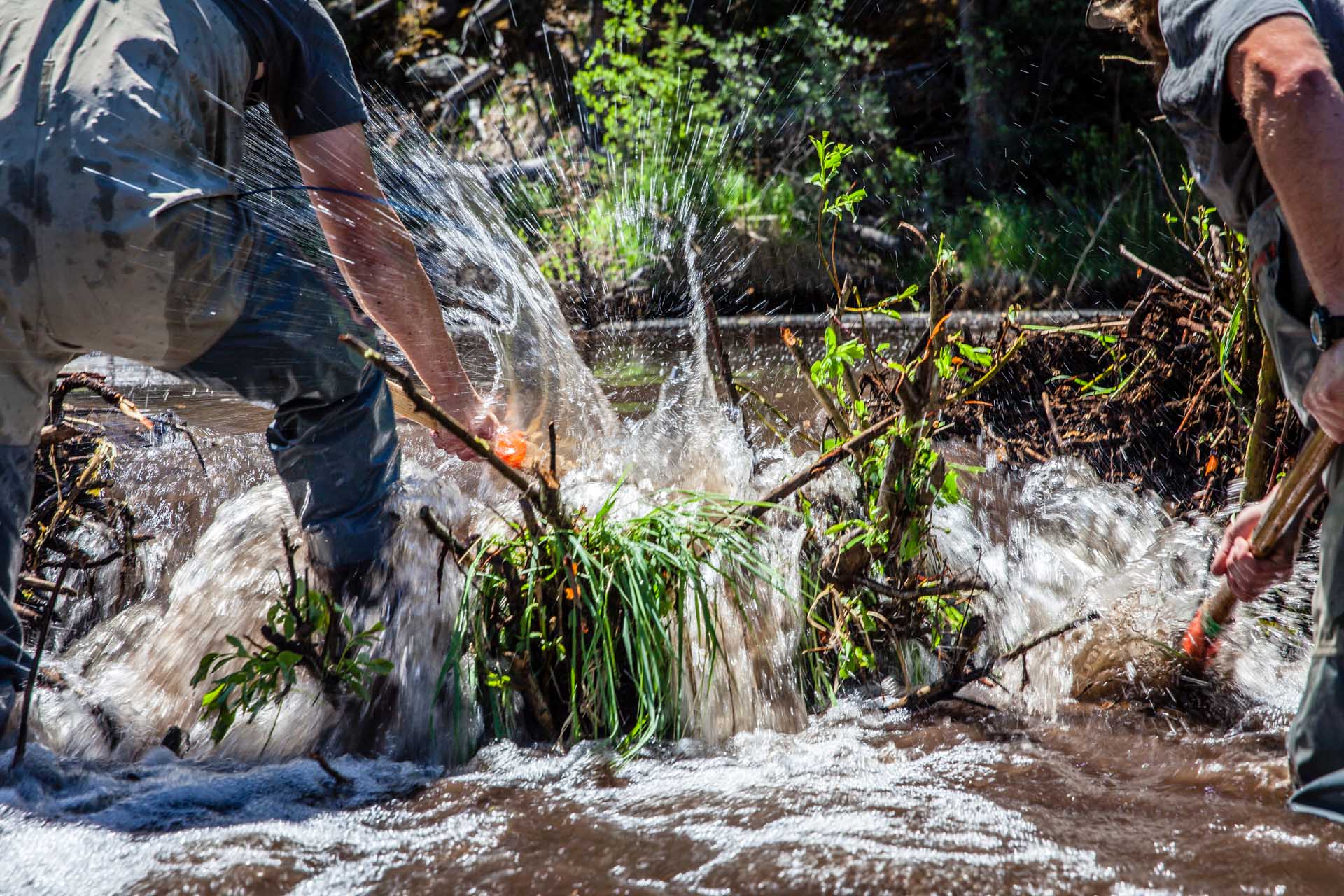
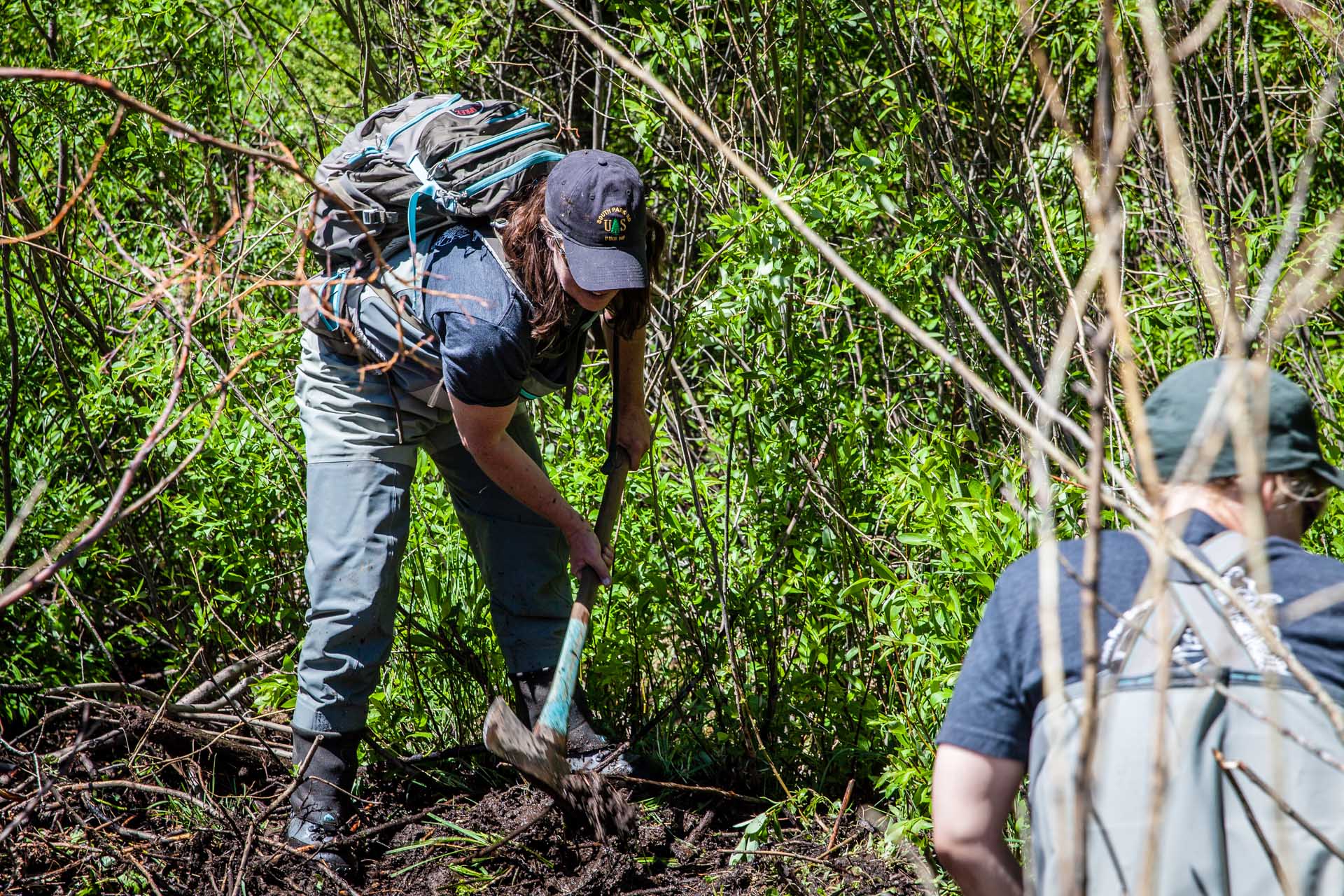
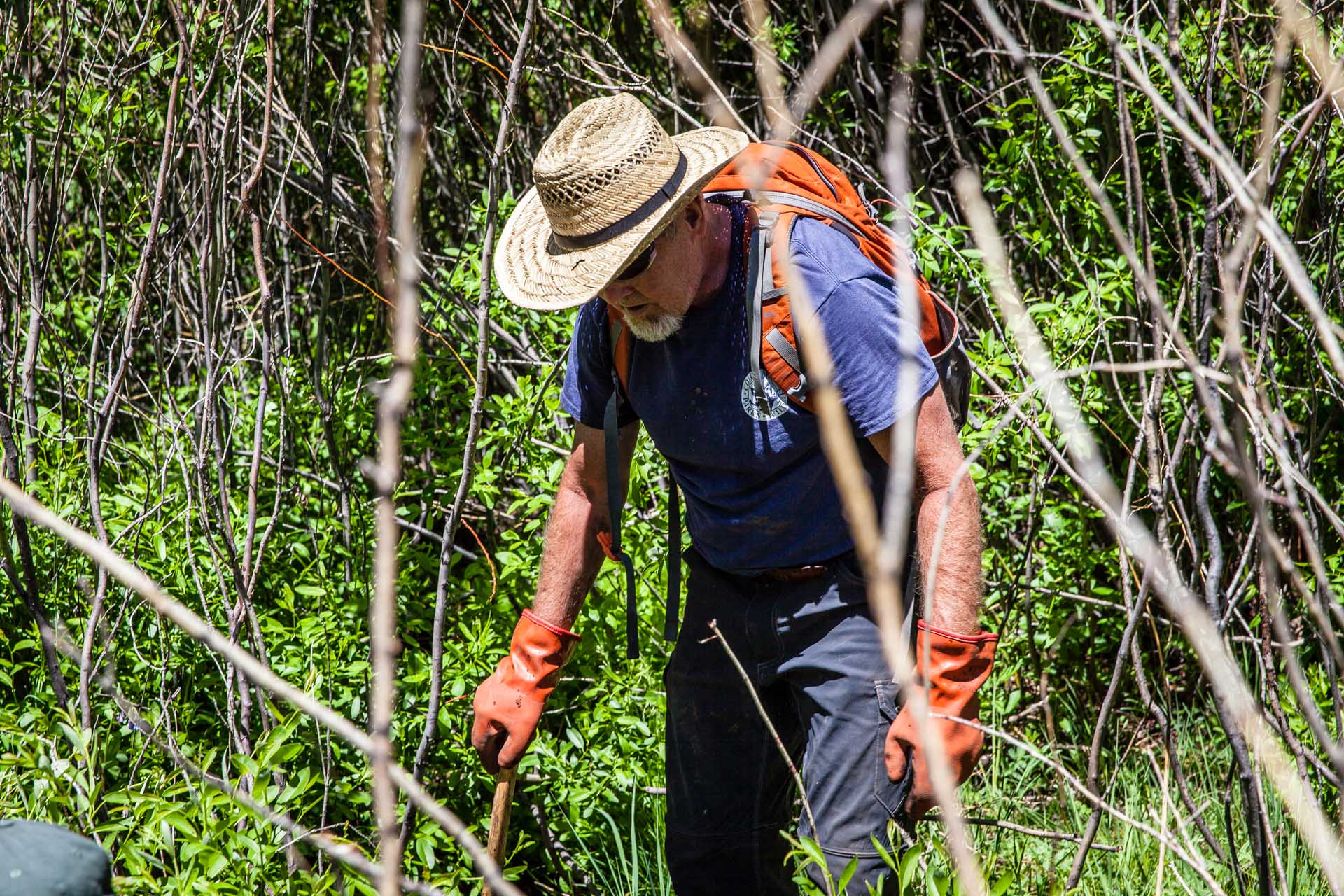
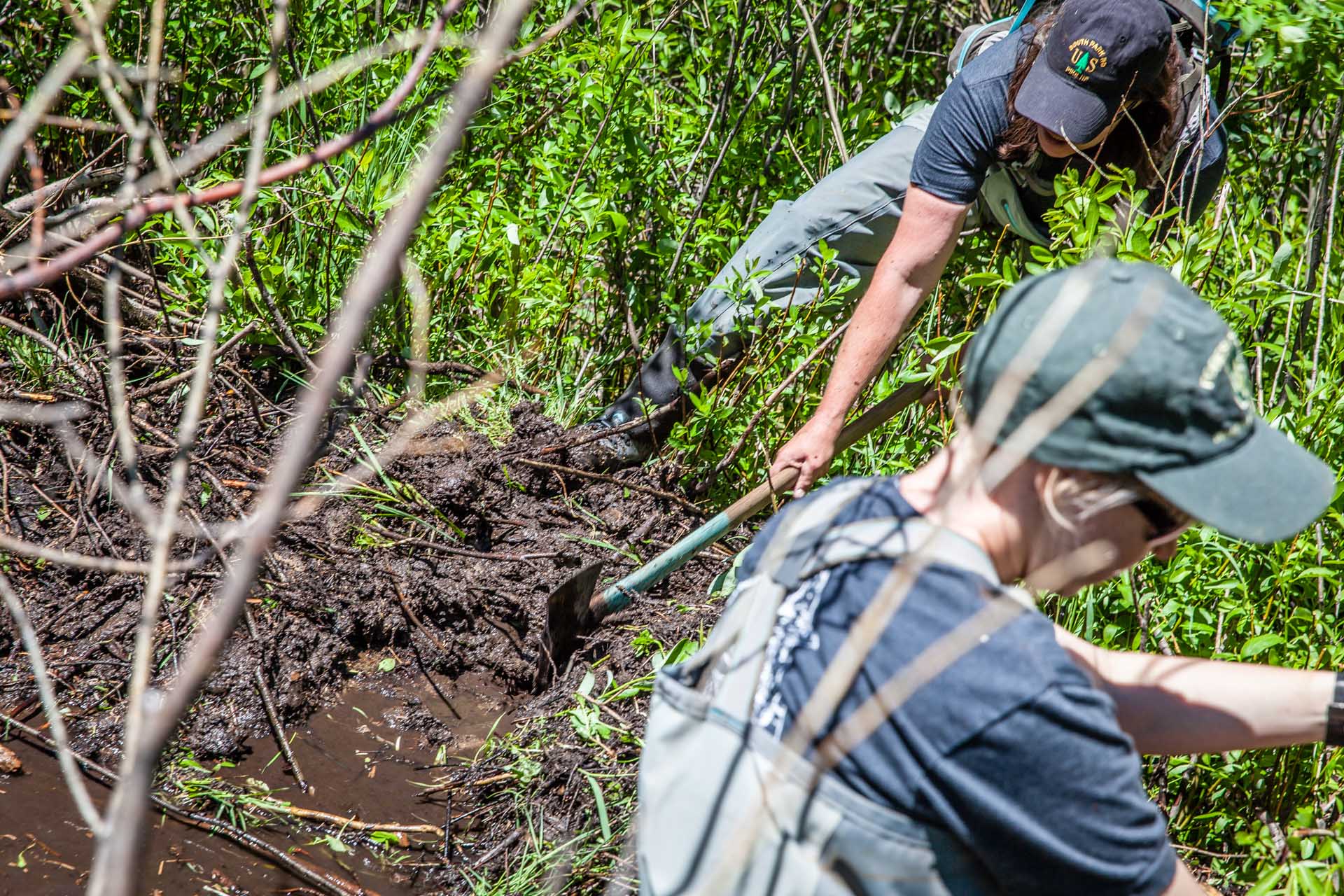
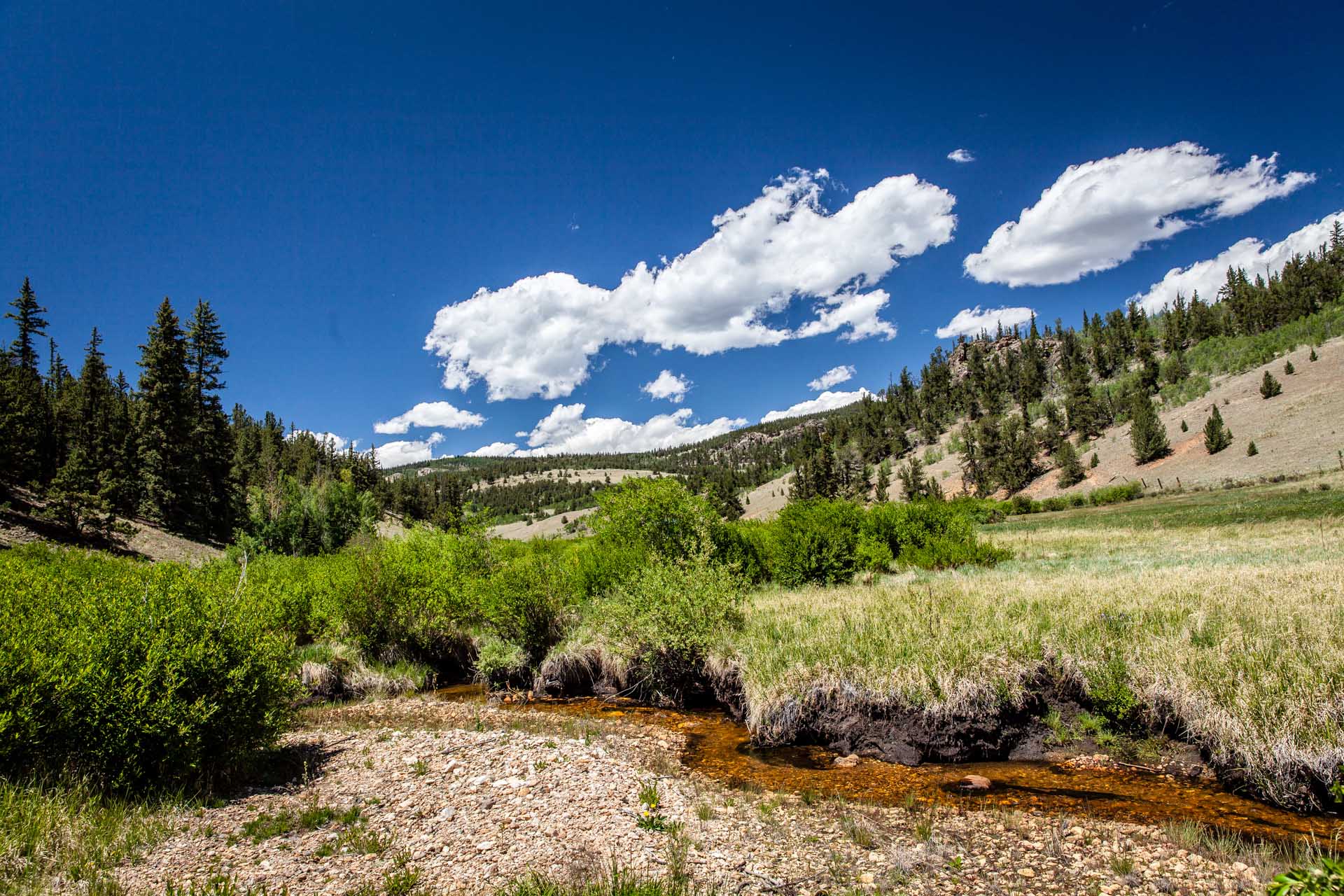
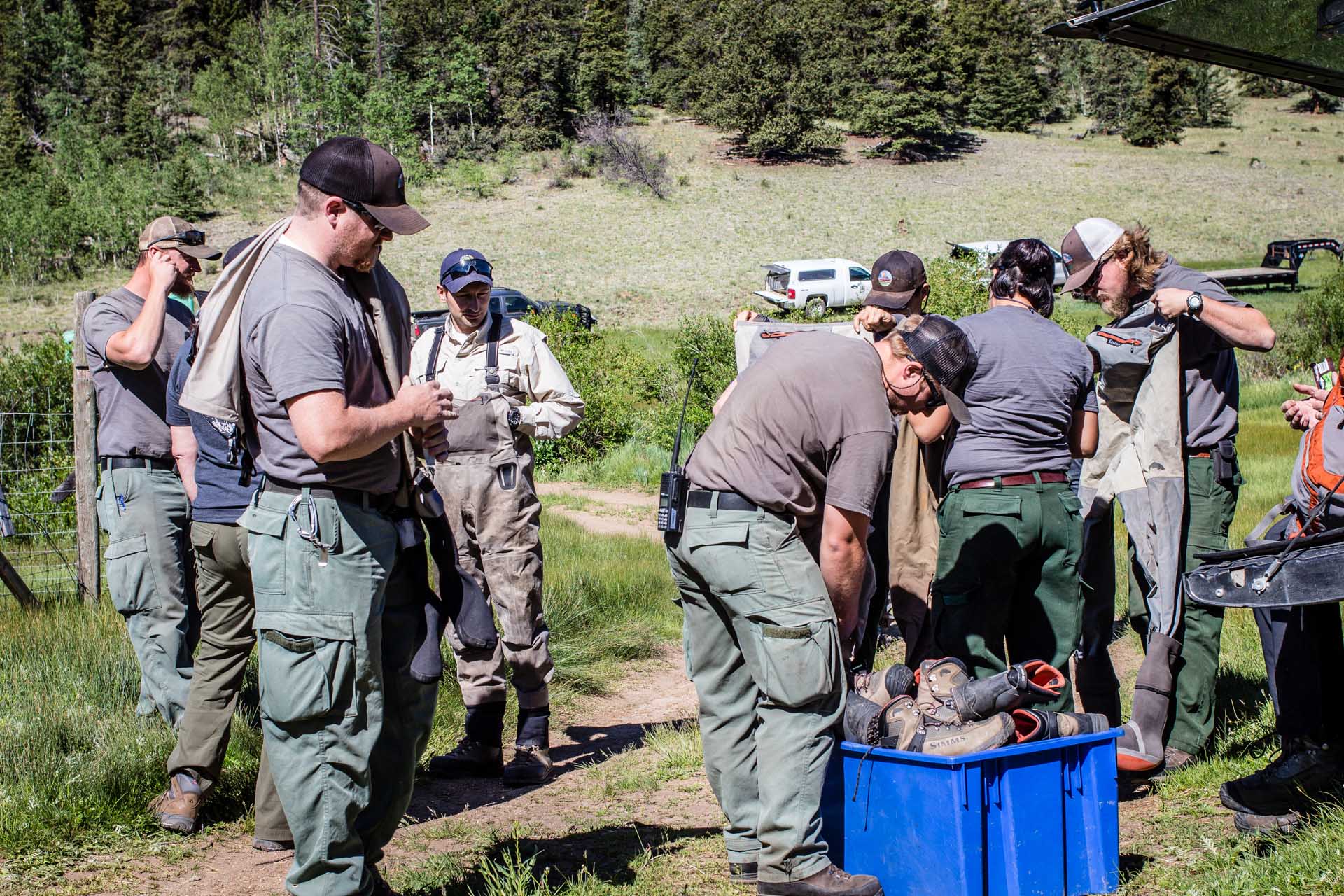
Pictures courtesy of Basin+Bend.
VIDEO: Reintroduction of Native Greenback Trout in Estes Park, CO
Join Alpine Anglers Trout Unlimited Chapter as they head out to the Big Thompson for a day of fishing. Learn about the important work going on in the area in regards to habitat restoration to help with the reintroduction of native Greenback Cutthroat Trout. Check out the great video below and learn more about what the chapter is doing here.
Stream Monitoring: What's New?
A note from National TU Staffer, Kurt Fesenmyer:
"One great way to take the pulse of your local river is by monitoring stream temperatures. Inexpensive data loggers offer the opportunity to record water temperatures every hour for several years, providing easy access to important information on seasonal patterns, short-term trends, and the impacts of restoration projects or other activities in a watershed.
TU’s Science Team has spent the past few months test driving a new data logger for monitoring stream temperatures. We’re happy to report that the new loggers work very well and should make monitoring your local stream even easier. The new loggers — the Onset TidbiT MX series — are the latest iteration of the reliable Tidbit product line. We are recommending the Tidbit MX2203, which cost just over $100 each.
The new model includes several features that will prove very useful for long-term stream temperature monitoring—they have a four-year battery life under normal conditions and a replaceable battery; they can be launched and their data downloaded using a Bluetooth connection and the free Onset HOBOmobile app; and they have a ‘water detect’ feature that can be used for monitoring stream drying and patterns of intermittency. For more information about the loggers, including basic instructions on calibrating, setting up, and launching loggers, as well as details on how to receive a discount Onset is kindly offering TU volunteers, check out the newly updated Version 3 of TU’s Stream Temperature Monitoring handbook.
The handbook contains some basic guidance on "Why," "Where," and "When" to monitor and is a great starting place for chapters thinking about stream temperature monitoring. Additional resources are available on TU’s stream temperature monitoring resources webpage."
If you are interesting in citizen science opportunities in Colorado. Contact Grassroots Coordinator Dan Omasta, DOmasta@tu.org
Anglers All 2018 Trout Clave in support of CTU - A Spring Celebration!
Spring has never looked so good! Anglers All's favorite annual event is Saturday, April 21 - the 2018 Trout Clave. Join Anglers All and CTU in a celebration of conservation with live music, food, beer, and of course gobs of fly fishing fun. The event kicks off at 9:00 a.m. on Saturday, April 21 and the party will continue until 5:00 p.m. The event was made possible because of great sponsors, including Patagonia, Sage, and Fishpond, this year’s event is going to be one to remember.
Be sure to get there early for Anglers All's annual half-off fly sale. From 9:00 a.m. until 11:00 a.m. only, trout flies are 50% off! But the fun doesn’t end there.
This year, 10% of all store sales the day of the Clave will be donated to Colorado Trout Unlimited in support of Colorado’s fisheries. Furthermore, Patagonia has generously offered to match this donation to CTU!

In addition to Colorado Trout Unlimited, Backcountry Hunters and Anglers and the Bonefish And Tarpon Trust will also be participating in the Trout Clave this year. In fact, anyone who signs up for a membership to one of these great conservation organizations at the Clave will receive a 10% discount on their purchase.
Breckenridge Brewery will be supplying cold ones, plus there will be food and live music throughout the day. The folks at Breckenridge Brewery will be sponsoring some awesome South Platte River service projects that day, including a river cleanup, pollinator plantings, and installing monofilament-recycling stations along the river. We will be asking for volunteers to signup in advance, so stay tuned for these opportunities.
The Trout Clave is a great chance to catch up with friends and customers and to celebrate a new year of fly fishing adventures. There will be raffles, gear giveaways, and opportunities to chat with product reps from some of your favorite fly fishing brands.
Big thanks goes to Patagonia for their sponsorship, as well as Fishpond and Sage. We look forward to seeing you at the 2018 Trout Clave!
Facebook Event Listing: 2018 Trout Clave
Trout Unlimited in Colorado 2017 Annual Report
We are happy to announce that our 2017 Annual Report is live and available for your viewing. Last year was filled with great work across the whole state and the finishing up of many restoration projects and continuing others! Thank you to everyone who supported Trout Unlimited in Colorado last year.
Click here to read the CTU 2017 Annual Report
National Funds to Support Greenback Recovery in CO
JANUARY 4, 2018 – The National Fish and Wildlife Foundation (NFWF) has recently announced their slate of awardees for the competitive Bring Back the Natives Grant (BBN)– a program that will provide $1 million in grants to support habitat restoration and other on-the-ground projects that advance recovery goals of native fish throughout the United States in 2018-19. A partnership between NFWF, the U.S. Forest Service, U.S. Fish and Wildlife Service, Bureau of Land Management, Bass Pro Shops and the Brunswick Public Foundation, “Bring Back the Natives represents the benefits of coordinated efforts between private landowners and federal agencies to improve the health of watersheds,” said Jeff Trandahl, executive director and CEO, NFWF.
As one of the 15 grant recipients, Colorado Parks and Wildlife (CPW) will receive $60,000 to support the design and construction of a critical temporary fish barrier on Cornelius Creek. Located in the US Forest Service Canyon Lakes Ranger District (USFS-CLRD), the George and Cornelius Creek drainage is one of the most significant Greenback Cutthroat recovery sites to date.
The Greenback cutthroat trout is currently listed as “Threatened” under the Endangered Species Act, and is believed to have been endemic to coldwater streams and lakes of the South Platte River Basin. Once a thriving species, the Greenback has suffered significant impacts from human development, competition from non-native fish, and the introduction of whirling disease. Once thought to be extinct, the native trout is making a comeback thanks to a coalition of state and federal agencies, non-profits, private landowners, and public volunteers.
The George and Cornelius Creek watershed has been identified as a high priority for establishing a robust Greenback cutthroat trout metapopulation. Due to its relatively low elevation compared to that of many other streams in the basin where cutthroat trout reintroduction may be feasible, these creeks feature thermal conditions that fall within an optimal range for cutthroat trout recruitment. Additionally, these streams are already managed for a Greenback cutthroat trout recovery population with regard to the Endangered Species Act, Section 7.
Due to the complexity of the habitat within the drainage, Colorado Parks and Wildlife and the US Forest Service will take on the project in stages. With the presence of both whirling disease (WD) and non-native fish in the area, biologists will build three temporary barriers that will segment the two tributaries and allow for effective treatment over the next few years. Once the streams have been cleared of WD and non-native competitors, the Greenbacks will be introduced. This process is expected to take several years.
The desired outcome of the entire multi-phase project is successful establishment of a self-sustaining Greenback cutthroat trout population in 14 miles of connected habitat. At this writing, Greenbacks only occur in the wild in four waters, three of which are the result of recent introductions.
The Greenback Cutthroat Trout Recovery Plan (US Fish & Wildlife Service 1998), although in the early stages of being updated, calls for—among several other requirements—stable Greenback populations in at least 31 stream miles in order for the species to be considered for de-listing. Currently, there are no stream populations in the South Platte Basin that meet the Recovery Plan’s criteria for “stable conservation populations.” Therefore, the importance of the George and Cornelius Creek Project, which is slated to create up to 14 miles of such habitat, cannot be overstated.
The Cornelius Creek barrier is essential to the overall success of the project by enabling CPW biologists to treat the upper section of the creek while concurrent restoration work is being completed in the other units. With the funding provided by the NFWF Bring Back the Natives Grant, CPW will now have the resources necessary to move forward in this critical recovery effort and secure a large drainage for the Greenback.
Note: Due to various treatment protocols for Whirling Disease (which has been found in the area), the entire project will likely be completed near 2026. The barriers will be in place by the end of 2019. For more information, please contact Dan Omasta, CTU Grassroots Coordinator (domasta@tu.org).
For more information on the NFWF BBN Grant and other recipients, Click Here.
























